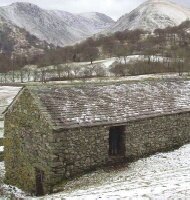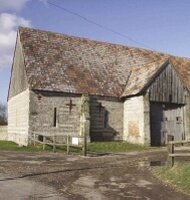Caring for Farm Buildings


This leaflet, published in May 2004, has been designed to help farmers, land managers and farm advisers recognise the importance of traditional farm buildings and provide some guidance on taking care of one of the countryside’s important assets.
Why are Traditional Farm Buildings Important?
The countryside of today and tomorrow is also the countryside of yesterday. The history of much of English agriculture is encapsulated in traditional farm buildings. Farmsteads and buildings are as important to the character of the countryside as the field patterns and boundaries associated with them in helping to create local identity and sense-of-place. The great diversity found in English farmsteads and buildings relates to the varying geology, farming practices, settlement patterns, land tenure and building techniques found across the country.
Modern farming practices have led to major changes within many farmsteads. New machines require larger buildings, and animal welfare and hygiene require new standards in buildings. Economic pressures may mean there are limited resources available for maintaining increasingly redundant traditional farm buildings while amalgamation of farms has left some farmsteads totally redundant.
This leaflet looks at how farmsteads and farm buildings reflect the history of farming in an area. It also looks at the importance of developing a thorough understanding of the building or site in order to develop an effective conservation or restoration approach and the importance of obtaining specialist advice early on in any such programme. The leaflet gives advice on the maintenance and repair of historic farmsteads and lists useful sources of advice on how to manage historic buildings and grant schemes.
Summary
- It is important that traditional farm buildings are cared for because:
- They are a vital element in defining the character of the countryside
- They are a finite historical and archaeological asset, forming an important resource for understanding the development of farming in an area
- They may be listed buildings, or lie within the curtilage of a listed building, and so are legally protected
- They often have a wildlife benefit, for example, as bat roosts
- They are economically valuable. Many farm buildings have the potential for alternative uses; protecting the asset now may mean a future project will be financially viable
- They represent significant environmental capital in their materials and construction
- Wherever possible, historic farm buildings should be kept in active farm use, as this is the best way of safeguarding their historic character.
REMEMBER to take account of historic farm buildings when you develop plans for farm diversification or development to make applications for agri-environment schemes.
What's New?
-
The National Heritage List for England is now live on the English Heritage website.
-
Welcome to the HER21 page. This page offers access to the full suite of HER21 project reports.
